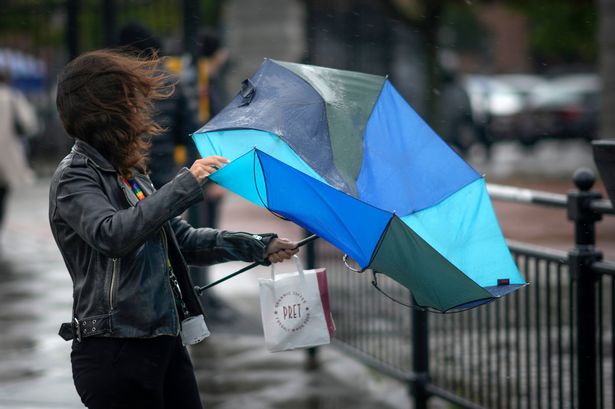Storm Darragh, the fourth named storm of the season, threatened to unleash its fury upon the British Isles, prompting the Met Office to issue severe weather warnings and highlight the potential “risk to life and property.” Across the nation, preparations were underway as residents braced for the impending onslaught of high winds, heavy rainfall, and coastal flooding. The storm’s projected path encompassed a wide swathe of the country, raising concerns about potential disruption to travel, power outages, and damage to infrastructure. The Met Office’s warnings underscored the seriousness of the situation, urging people to take necessary precautions to ensure their safety and minimize potential damage. The looming threat of Storm Darragh dominated conversations and news headlines, highlighting the vulnerability of even the most developed nations to the raw power of nature.
The specific dangers posed by Storm Darragh included gusts of wind exceeding 70 miles per hour in exposed coastal areas and mountainous regions. These powerful winds threatened to down trees, damage power lines, and disrupt transportation networks. Heavy rainfall accompanying the storm raised the risk of flooding in low-lying areas and near rivers, potentially forcing evacuations and causing widespread property damage. Coastal communities faced the added threat of large waves and storm surges, capable of overtopping sea defenses and inundating coastal properties. The combined impact of these meteorological forces created a potent and dangerous situation, requiring residents to remain vigilant and heed the advice of authorities. The severity of the warnings issued by the Met Office reflected the potential for significant disruption and the need for comprehensive preparations.
As Storm Darragh approached, a sense of anticipation and apprehension gripped the nation. Supermarkets reported increased sales of essential supplies, as people stocked up on food, water, batteries, and other necessities. Homeowners secured loose objects in their gardens and reinforced windows and doors to protect against the strong winds. Travel plans were disrupted, with airlines canceling flights and train operators reducing services to minimize the risk of accidents. Schools and businesses in affected areas also announced closures, prioritizing the safety of students and employees. The collective preparations reflected a nation united in its anticipation of the storm and determined to mitigate its impact.
The impact of Storm Darragh extended beyond immediate physical damage. The disruption to transportation networks caused delays and cancellations, affecting commuters, businesses, and supply chains. Power outages, caused by downed power lines, could leave homes and businesses without electricity for extended periods, impacting daily life and economic activity. Flooding could lead to displacement of residents and damage to homes and businesses, requiring significant clean-up efforts and financial assistance. The potential economic consequences of the storm further underscored the importance of preparedness and effective disaster response mechanisms.
In the face of such a powerful storm, community spirit and resilience shone through. Neighbors helped each other secure their properties and prepare for the worst. Volunteers offered their time and resources to assist those in need. Emergency services personnel worked tirelessly to respond to calls for assistance and ensure the safety of the public. The collective effort demonstrated the strength of community bonds and the ability of people to come together in times of crisis. This spirit of cooperation and mutual support is crucial in weathering the challenges posed by extreme weather events.
Storm Darragh served as a stark reminder of the increasing frequency and intensity of extreme weather events, a trend attributed to climate change. The storm underscored the importance of investing in resilient infrastructure, developing effective emergency response plans, and raising public awareness about the risks associated with severe weather. The experience of Storm Darragh provided valuable lessons for future preparedness efforts and highlighted the need for a collective, proactive approach to mitigating the impacts of climate change. By learning from these experiences, communities can become more resilient and better equipped to withstand the challenges of a changing climate.














